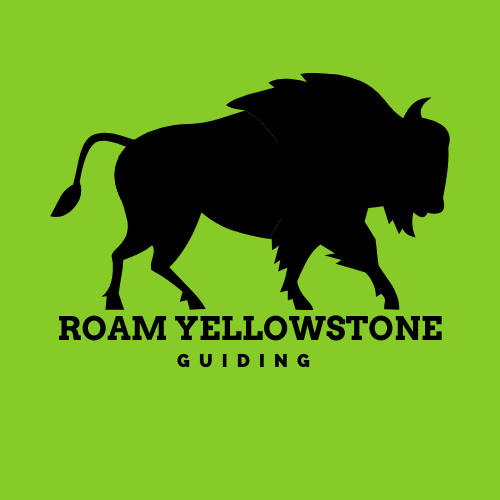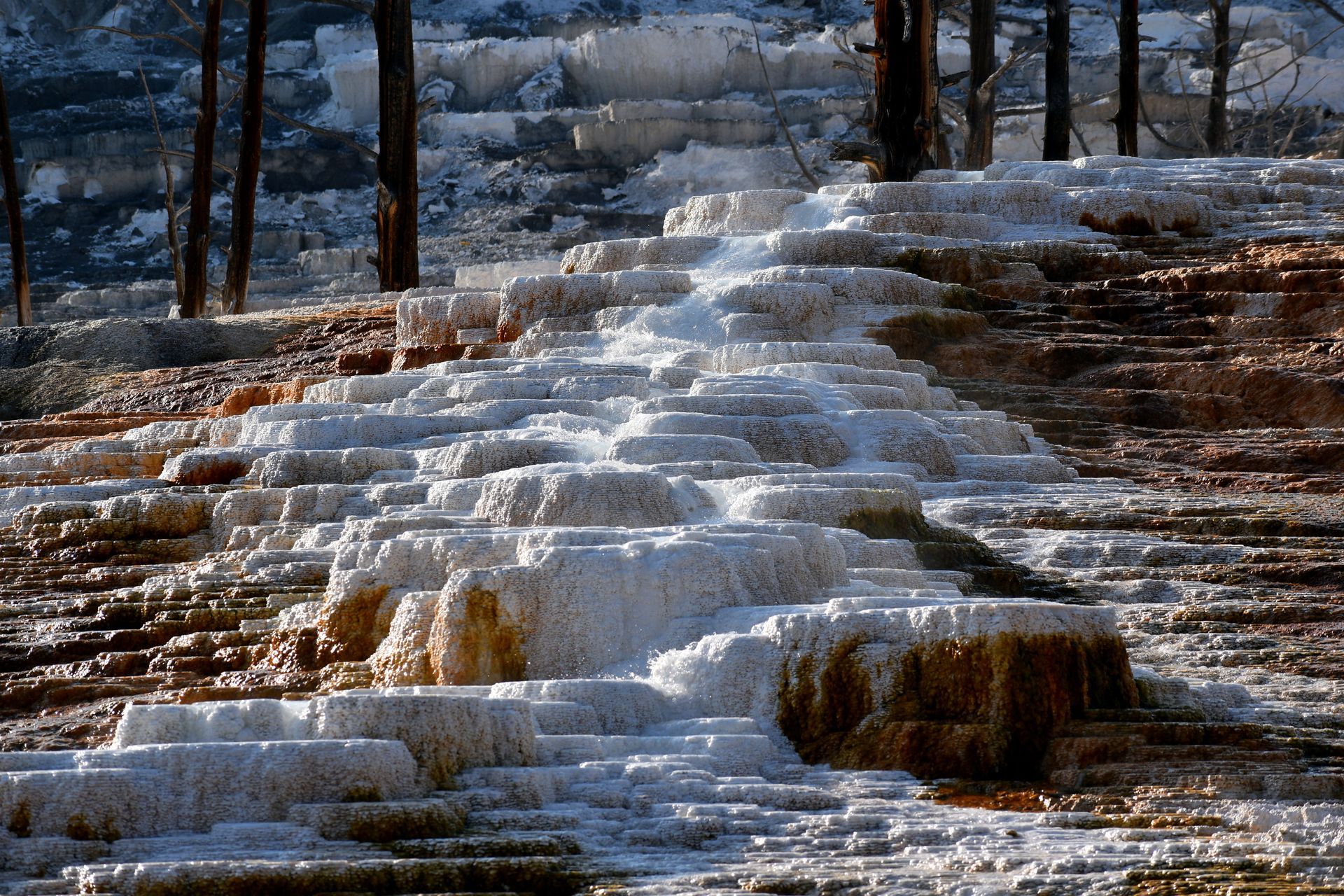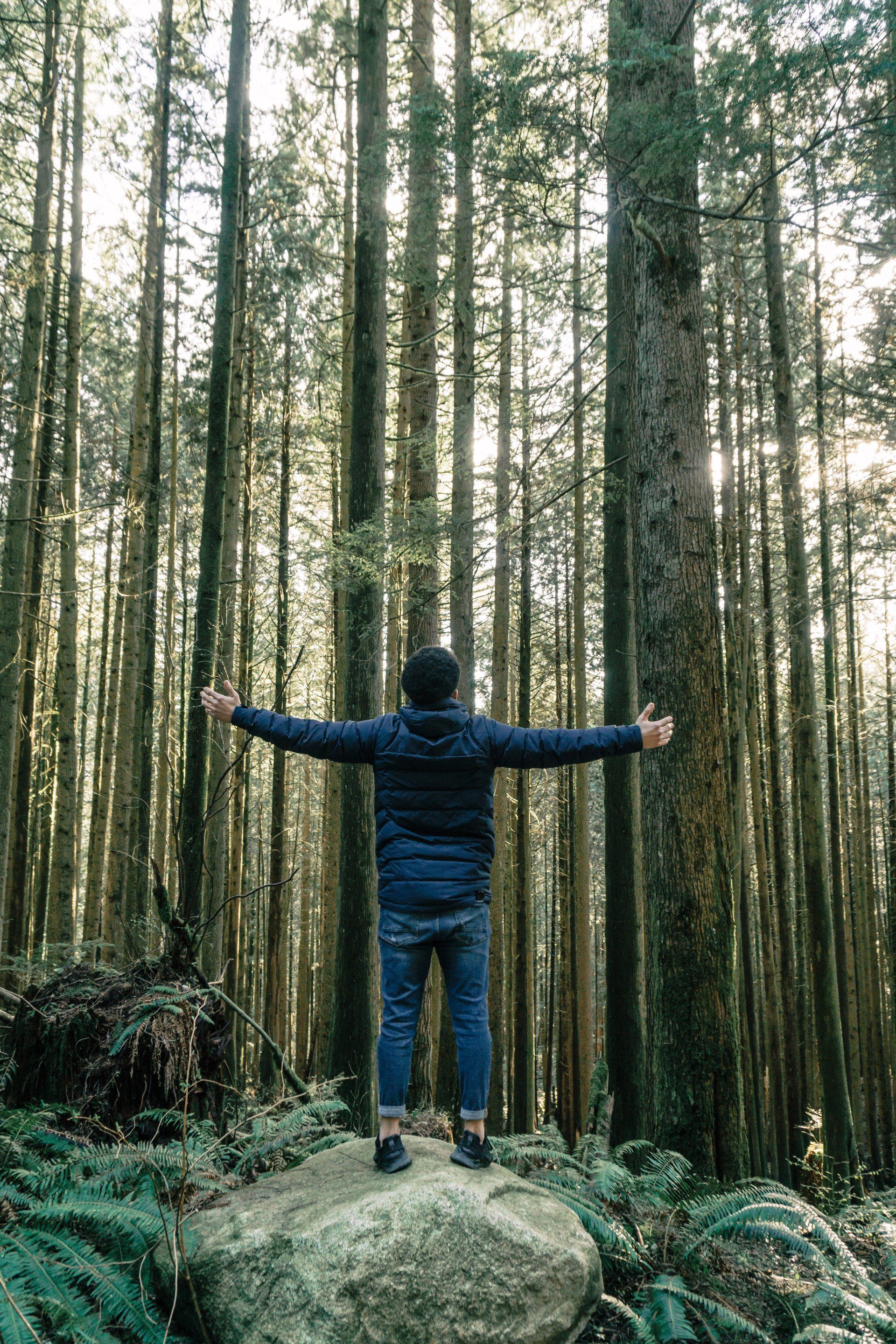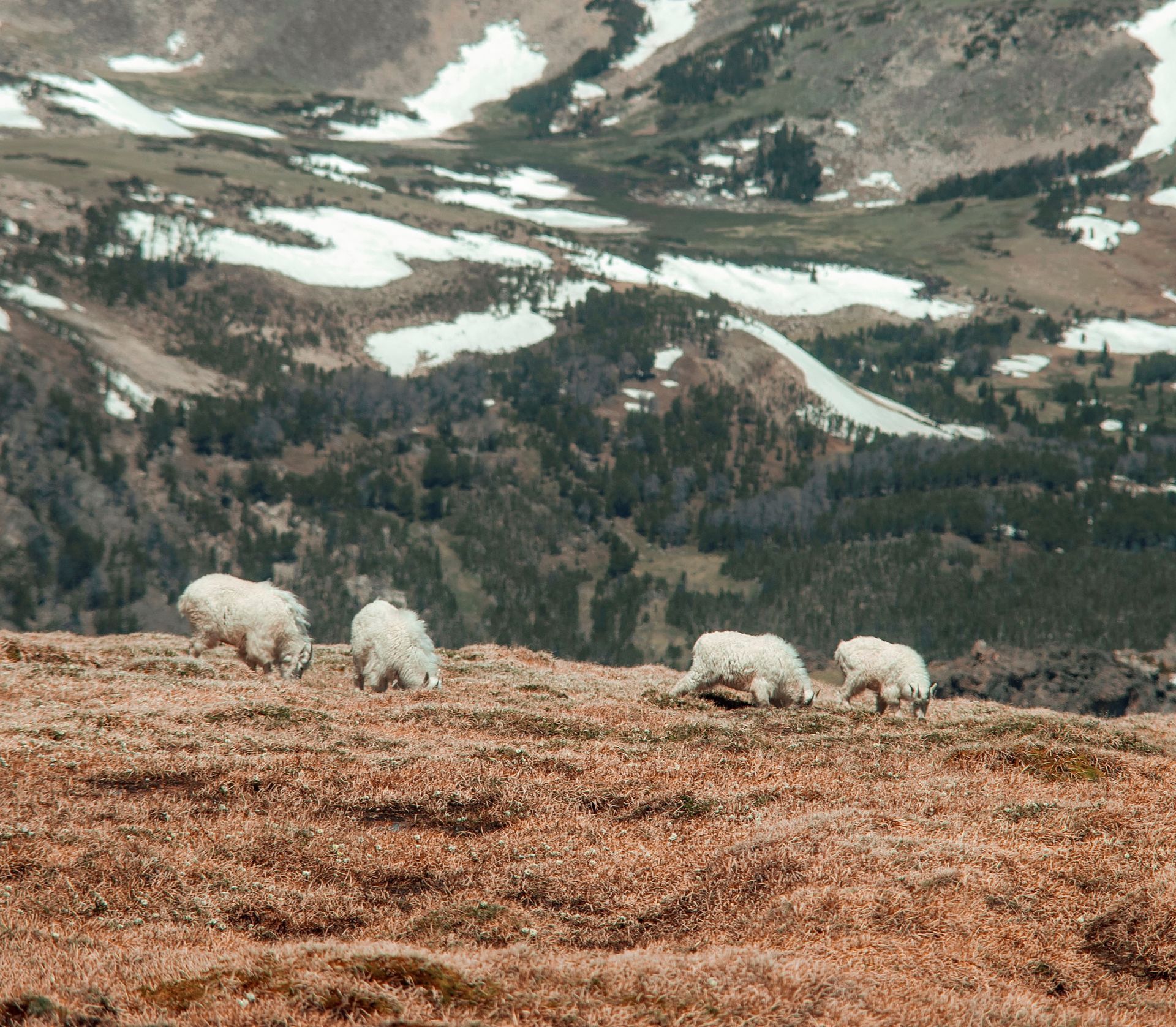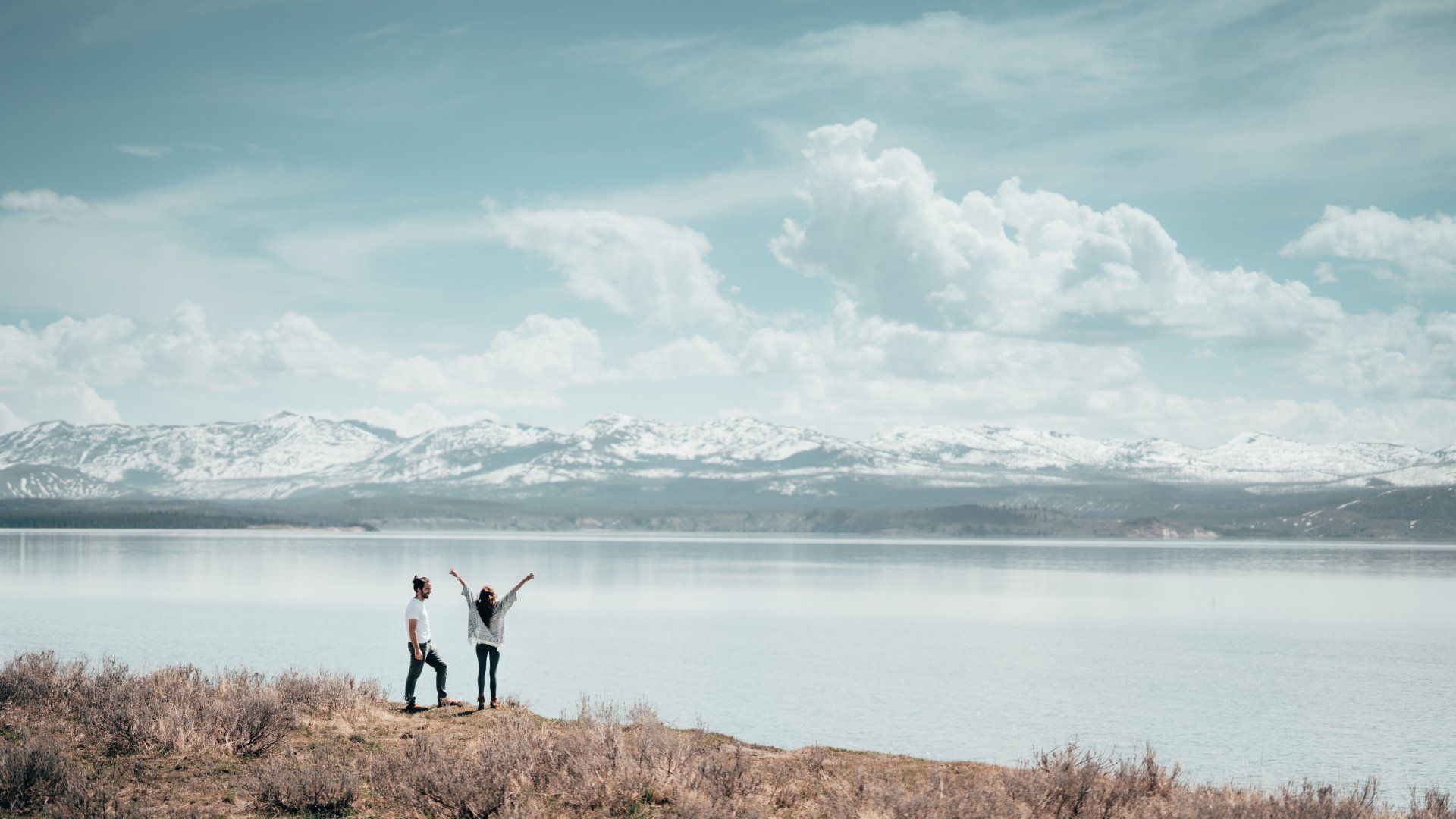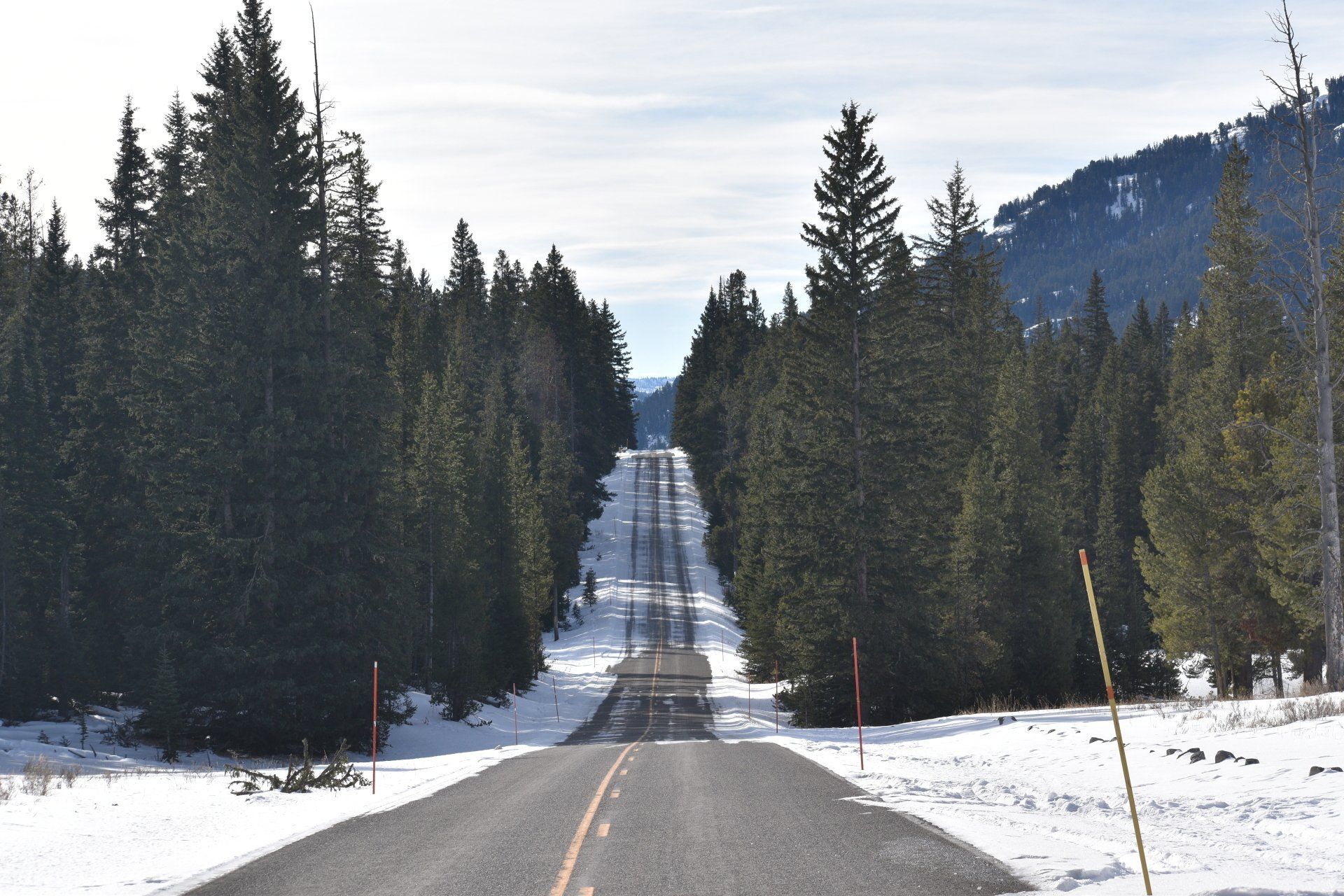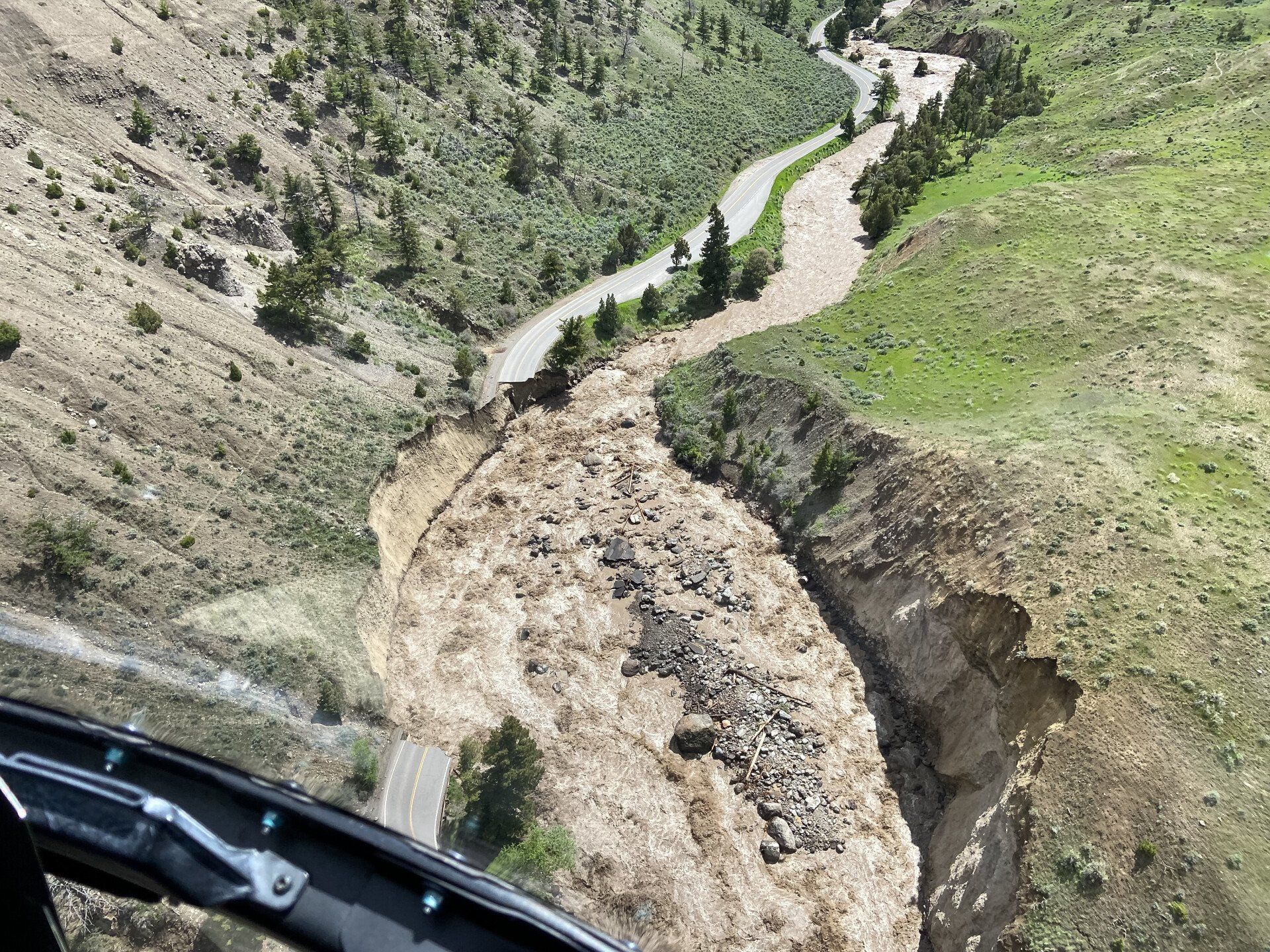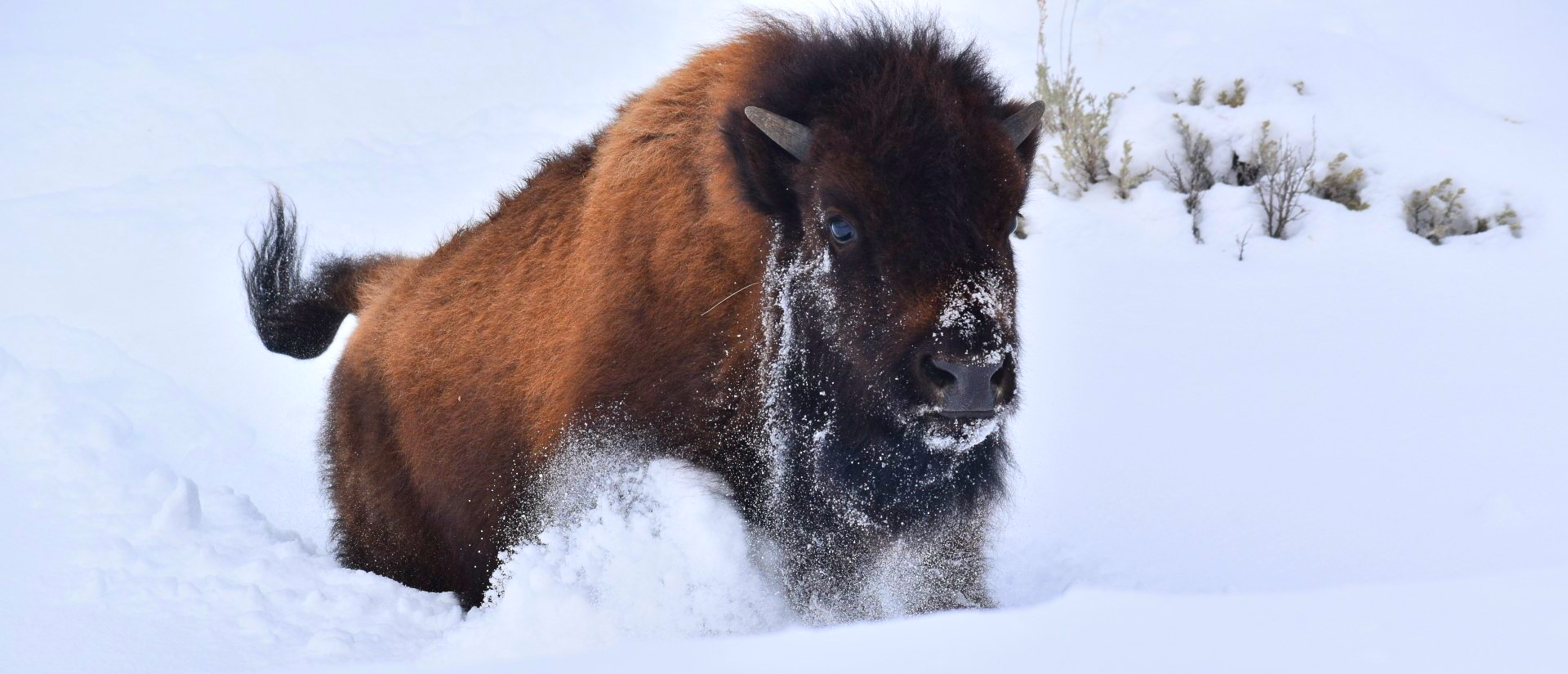Spring Time in the Park
Todd Schlotfeldt • March 23, 2020
Spring Travel in the Yellowstone National Park
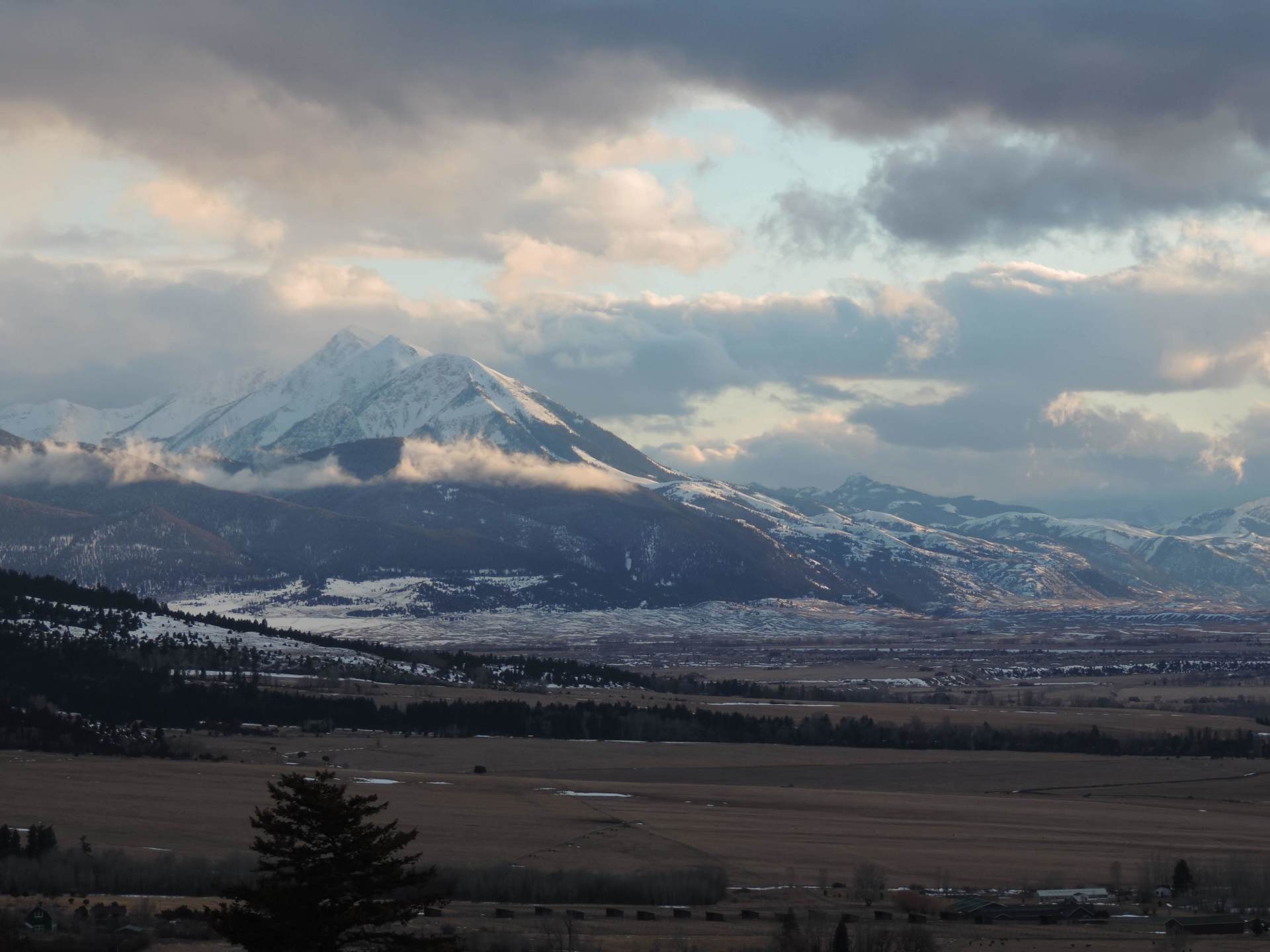
Traveling to Yellowstone National
Park during the spring time is a great idea but there are some things to consider before traveling during this time of year. There are a
number of reasons to visit the park before peak season. Visiting Yellowstone during spring can offer much smaller crowds at the main attractions. The
snow cover in the park can allow for easier cross country
travel if your goal requires it. The snowy mountain peaks
above lush green valleys offer beautiful vistas. If its simply the only time you can make it here, don't wait! However, if you do come during spring, here is my list of "things to consider" before booking the flights or packing the car.
- Road Closures. Make sure you know when roads will open back up for the year. There is only one section of road open to vehicles (other than snow coaches and snowmobiles) year round: from mammoth to the NE entrance/Cooke City. Every other road is completely snowed in for the winter and requires heavy duty plowing to clear it up for us visitors. Check out YNP's road page for current conditions. While opening dates of roads vary from year to year, generally all are open by the end of May. However, be sure to check out the road from canyon to tower if you plan to travel that route, its the highest elevation road in the park and in 2020 will be close from construction.
- Weather. Make sure you pack for every season. In Yellowstone National Park, we can experience all 4 seasons of weather in a single afternoon and this crazy weather is amplified in the spring. Temperatures swing drastically from day to night and snow, rain and wind flurries can come out of nowhere on the nicest seeming days. It is important to check the weather the day before you go out and to pack for every season. You can check the weather here. This link will bring you to the National Oceanic and Atmospheric Administration which is a good source of weather in my opinion. You can visit the page and scroll down to the map, then click exactly where you want to hike or visit for a point forecast. Forecasts are more accurate for closer time frames.
- Snow Cover: Yellowstone National Park receives and average of 150" of snowfall at lower elevations and 400"+ at high elevations (above 9000'). It can take a long time for snow to melt in some areas and it never melts at all on some mountains! The Northern part of the park is typically more arid and less snowy than other areas. Checking at ranger stations, calling park officials, or using SNOTEL sites to determine how much snow is in a particular area or elevation can make or break the planned outing. Planning a full hike and getting shut down by snow half way through is never fun. If you plan to hike on snow, bring gaiters, sunscreen, sunglasses and gloves as well as the other 10 essentials. Beware of avalanches.. Over at Roam Yellowstone Guiding, we prefer to ski in the spring time as it creates perfect conditions for ski mountaineering!
- Bears: Each year from March to May (sometimes earlier or later) bears leave their hibernation dens and start looking for food. These bears have gone a full winter without food and are typically quite hungry. The food we carry attracts bears and if a bear is hungry enough, it very well may attack in search of a bite to eat. Always carry bear spray when bears are out of hibernation and know how to avoid a confrontation!
- High water: Even small streams can become fully engorged and impassible during spring runoff. Water hazards can be very dangerous if proper technique and tools are not used for crossing. Trekking poles can help immensely and so can linking arms with partners. Keep essential items on your person and unbuckle your pack in case you fall and need to ditch you pack, packs can be dangerous if you have to swim. Don't underestimate the force of even a small stream. In Yellowstone, brown water is almost always fast water.
This list is not exhaustive but it gives you a good place to start for planning and knowing what you might run into. At Roam Yellowstone Guiding we can establish itineraries to teach any desired skill or reach any desired destination within Yellowstone. Our group hikes come with a wealth of education and instruction and our private tours can be molded to fulfill any desire.
Time to roam!
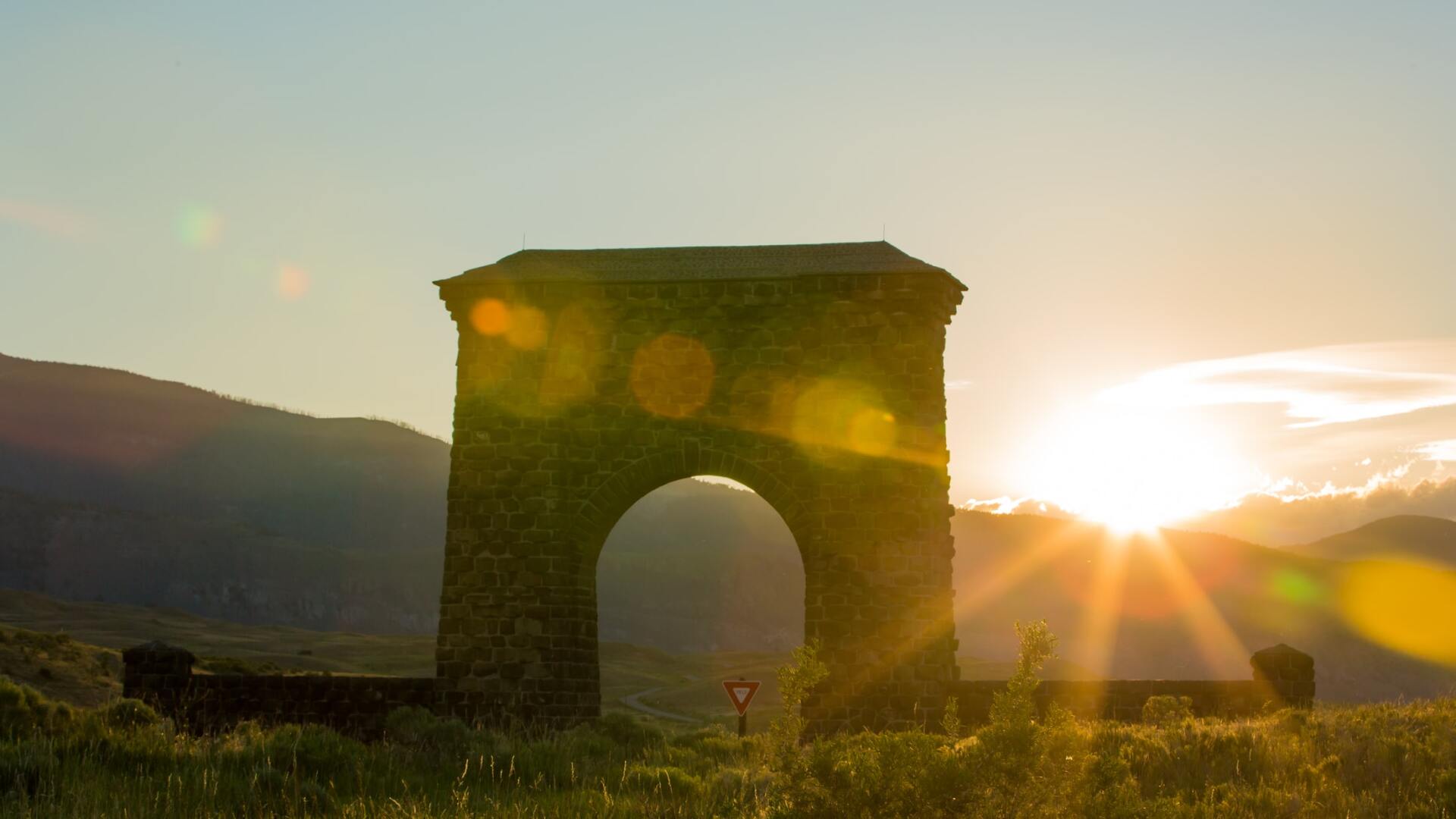
2020 left many visitors out of convenient lodging inside Yellowstone National Park. For 2021, our excellent park service has created a detailed list of what lodges, campgrounds and stores are going to be open, when they will open and when they will close. Please note that all dates are subject to change. As always feel free to contact us if you have questions while planning your travels. Staying inside the park is the most convenient way to experience Yellowstone but make sure to plan ahead to ensure a smooth vacation. Consider booking our Private Summer Safari Tours or our Private Day Hiking Excursions to make the most out of your time in Yellowstone!
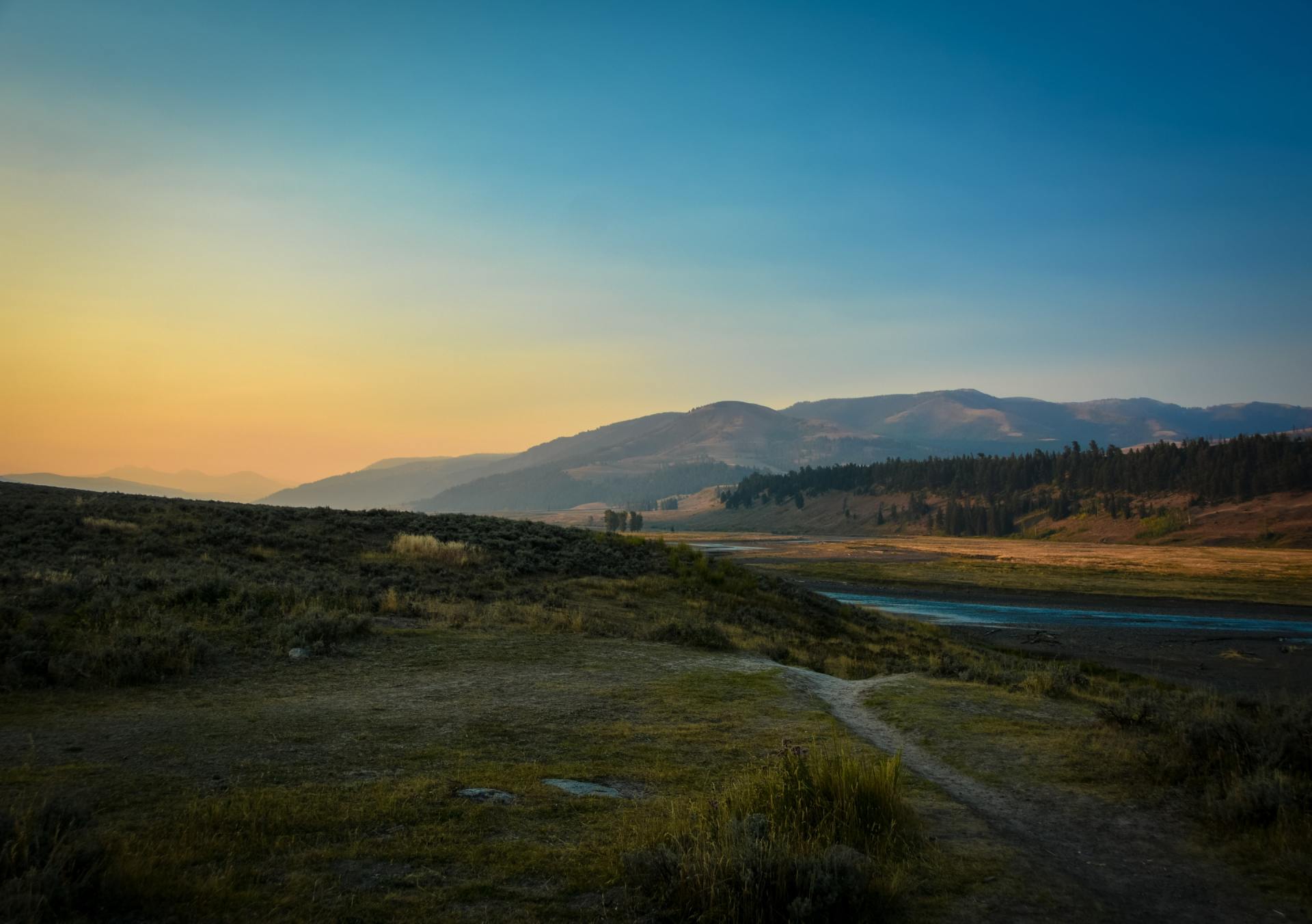
Covid-19 has created its challenges, but we are embracing new changes so we can have an adventurous and exciting winter season while taking every measure to ensure the health of out clients and staff. Yellowstone will be different during the pandemic. There will be a decrease in international tourism and stagecoach bus tours can not operate in their normal capacity. Our Guides are taking all the necessary safety precautions while leading our tours . We hope this information gives you peace of mind as you plan your outings this summer. Call 406.551.6518 or fill out a form on the Contact page to receive more information. What measures will be taken to minimize exposure while interacting with clients? Clients will be greeted with a healthy amount of hand sanitizer instead of a handshake. Guides will stand at a safe 6 foot distance from clients when possible and practice enhanced sanitation procedures. What social distancing measures are we taking during tours? Masks will be encouraged in situations where we can’t maintain social distancing. We will practice social distancing with other people on the trails/boardwalks as well. We will educate and enforce the importance of Covid-19 measures within the park as our clients continue their visit in Yellowstone. How will CDC Hand Washing & Sanitation measures be followed? Every client of Roam Yellowstone Guiding must sanitize before the tour begins, before and after lunch, and at the end of the tour. Tour guides will have hand sanitizer on their person at all times and will encourage clients to bring their own as well. How often will we sanitize gear and equipment? There is only one group, per guide, per day which keeps families/cohorts separate. Any borrowed gear will be sanitized at the beginning and end of every day with a sanitizing spray or alcohol wipes. Binoculars will be sanitized between each individual use and everyone will have their own gear to avoid sharing and cross-contamination. Will any gear be shared? The only shared gear will be binoculars and bear spray. The guide will have their own pair of binoculars and a few other pairs will be dispersed throughout the group. They will be sanitized with an alcohol wipe between each client and at the end of the day. The bear spray will be held by a few chosen individuals in the group and sanitized at the beginning and end of every day. If a client needs assistance with their gear, the guide will demonstrate, explain verbally, or have a member of the cohort assist said client eliminating any foreign human contact. If you choose to have food provided, how will we ensure minimal exposure and transmission? Roam Yellowstone will follow all rules and instructions from Serve Safe food handler's training to ensure proper food handling. Every lunch is packaged individually and will be carried by the client independently. How will we ensure that guides and clients are not ill? Guides will not be able to receive tours if any symptoms arise and Roam Yellowstone Guiding will check in often with our guides to make sure everyone is feeling healthy and fit. We will ask clients a series of questions before the tour as well as the morning of (I.e. do you have any symptoms? Does anybody you’ve been with in the last two weeks have any symptoms of Covid-19?) Peace of Mind: Roam Yellowstone Guiding will follow all Covid-19 regulations while in Yellowstone Park but also at home in our personal lives. Each client will be vetted before the booking request is accepted and we will check in with clients up until the tour begins. The business model of this particular guiding service eliminates brief interactions as well as extended interactions. Lets work together to create a safe environment during this beautiful Montana summer! Get outside. Be active. Give air hugs. -Roam Yellowstone Guiding
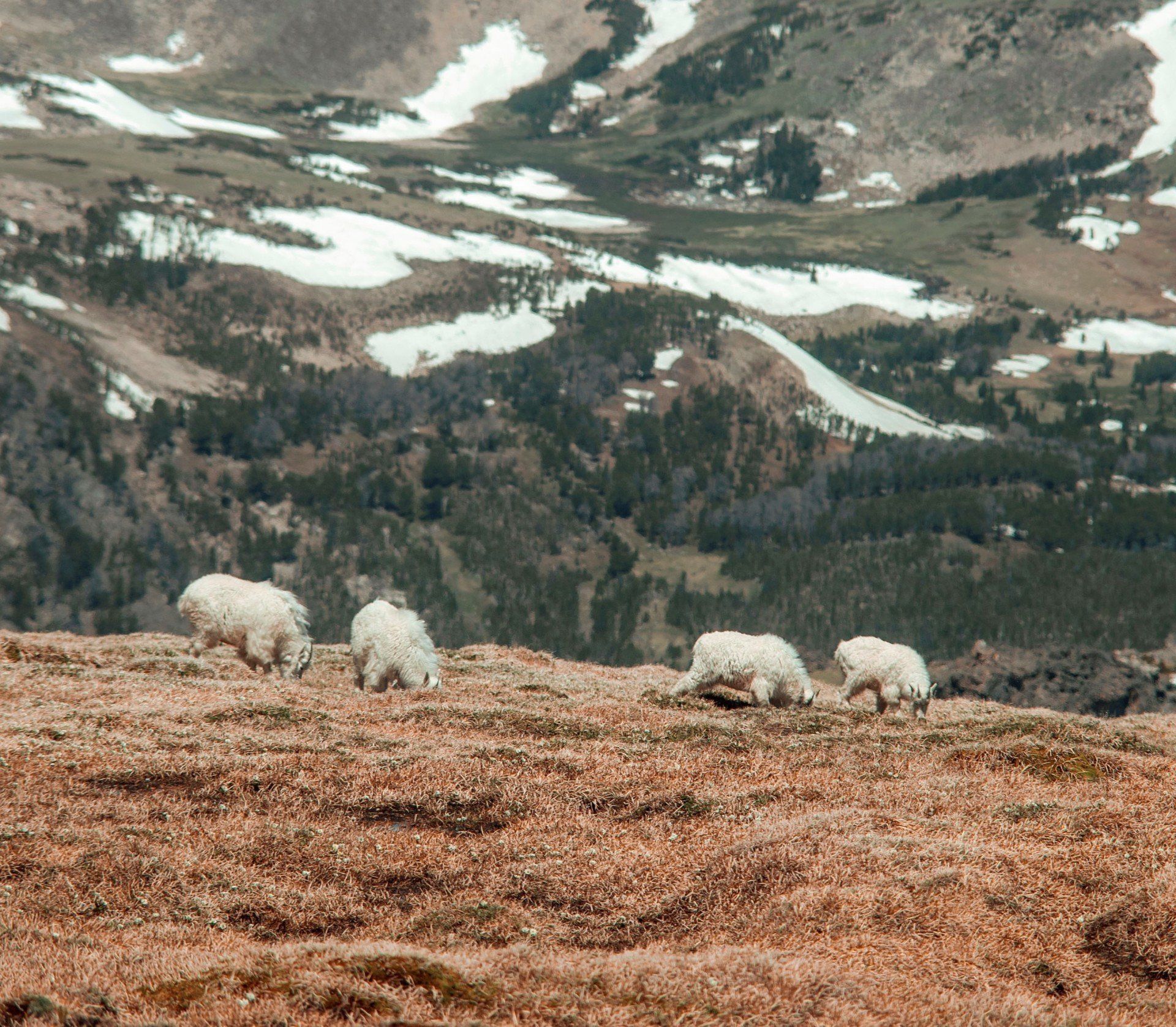
In Yellowstone you can find solitude. Yellowstone has a reputation for busy roads, animal jams, crowded boardwalks and uniformed/thoughtless tourists. When you go for a walk into the back country, this is rarely the case. You can be alone. In Yellowstone you can experience the most intact ecosystem in the lower 48 states. The management of the National Park Service (NPS) has created an amazing reserve of natural splendor. On the trails of Yellowstone you can tun a corner and be face to face with a Volkswagen sized bison, at which point you should retreat. You can see eagles and osprey dive for native Yellowstone cutthroat trout. You can watch bears and wolves scavenging and hunting as long as you want. You won't have to worry about stopping a mile long line of traffic behind you. In the backcountry, there aren't traffic jams. You can observe and photograph as long as you desire. In Yellowstone you can hike through hydrothermal areas - even in the backcountry. Many thermal areas in Yellowstone are roadside, have boardwalks, are incredibly beautiful and have a constant flow of tourists wandering through them. There are many more thermal areas in the backcountry that are just as beautiful and that you will likely have all to yourself (along with maybe a few bison). There won't be boardwalks or signs. It is up to you to stay safe and enjoy them in peace. In Yellowstone you can hear the true sounds of the wild. You can listen to the wind blowing, the bison grunting, the rivers cascading, the geysers thumping, the wolves and coyotes howling, the thunder in the distance, birds singing and trees creaking - all without the sound of other visitors, cars or dogs taking away from the natural symphony. The backcountry of Yellowstone offers the true sounds of nature. The wildlife, the hydrothermal areas, the mountains, the rivers, the sounds and more make Yellowstone one of the most interesting and engaging areas you can hike in. You have to really try to not have a memorable experience. Click here to learn more about our guided hikes in Yellowstone.

